Echinopsis Pachanoi For Sale
Are you looking for a one-of-a-kind and eye-catching plant to add to your collection? Look no farther than the San Pedro cactus, also known as Echinopsis Pachanoi For Sale (Syn. Trichocereus pachanoi), which is a cactus superstar. The Wachuma and Huachuma are other names for this fast-growing columnar cactus.
Echinopsis Pachanoi For Sale
This beautiful plant has pristine white San Pedro cactus blooms that bloom only at night and Pitahaya crimson fruits—talk about strange! San Pedro’s link to ancient Andean shamanic traditions is what makes it genuinely special.
San Pedro cactus seeds and cuttings are the most convenient method to propagate the plant. However, before taking any part of the plant, it’s crucial to be aware of the possible Sen Pedro cactus consequences.
Watering Needs
Are you looking for a one-of-a-kind and eye-catching plant to add to your collection? Look no farther than the San Pedro cactus, also known as Echinopsis Pachanoi For Sale (Syn. Trichocereus pachanoi), which is a cactus superstar. The Wachuma and Huachuma are other names for this fast-growing columnar cactus.
This beautiful columnar beauty may reach heights of up to 20 feet and extend its branches as broad as six feet! San Pedro is a spectacular showstopper in any landscape, with stems that vary from brilliant green to captivating blue-green tints. Its hues deepen and intensify as it develops, adding to its already stunning presence.
This beautiful plant has pristine white San Pedro cactus blooms that bloom only at night and Pitahaya crimson fruits—talk about strange! San Pedro’s link to ancient Andean shamanic traditions is what makes it genuinely special.
San Pedro cactus seeds and cuttings are the most convenient method to propagate the plant. However, before taking any part of the plant, it’s crucial to be aware of the possible Sen Pedro cactus consequences.
This beautiful columnar beauty may reach heights of up to 20 feet and extend its branches as broad as six feet! San Pedro is a spectacular showstopper in any landscape, with stems that vary from brilliant green to captivating blue-green tints. Its hues deepen and intensify as it develops, adding to its already stunning presence.
Light Requirements
To grow and flourish, San Pedro cactus demands a lot of sunshine. This cactus is exposed to direct sunlight for 4-6 hours every day in its native environment. It should be cultivated indoors in a bright, sunny setting that receives at least six hours of direct sunshine every day. You might need to use artificial grow lights to supplement the light your cactus provides if you live in a region with a lot of cloud cover or little sunshine.
However, too much sun may cause burns, so gradually increase exposure or bring it inside during a hot day. If your Echinopsis Pachanoi For Sale doesn’t receive enough light, it will begin to extend toward the source. So, let’s give your plant what it deserves: just enough light to blossom into the ultimate showstopper!
Optimal Soil & Fertilizer Needs
Use well-drained soil that has been specially formulated for your cactus. These unique soil mixtures have been meticulously created to mimic well-draining desert soils. Commercial cactus soil is inexpensive and may be purchased online or at Home Depot. We feel that using our specialist cactus potting mix, which includes over 5 natural substrates and organic mycorrhizae to stimulate the establishment of a robust root system that will help your cactus grow, is the best alternative.
Buy Echinopsis Pachanoi
When it comes to feeding your cactus plant, a tiny quantity of fertilizer applied once a year in spring is all that is required. Cacti prefer fertilizers with lower NPK dosages, with a maximum phosphorus-to-nitrogen ratio of 5-10-5. Remember that overfertilization may cause root rot or even plant death, so proceed with caution!
Hardiness Zones & More
The San Pedro cactus is a resilient plant that can thrive in a range of conditions. It is indigenous to the Andes Mountains, where it grows at great elevations in a variety of climates. San Pedro cactus is often cultivated in warm, arid regions such as those found in the southwestern states of the United States.
This cactus is hardy in USDA hardiness zones 8–11, which means it can withstand temperatures as low as 20°F. If you reside in a region where temperatures are high, you may need to take additional steps to keep your San Pedro cactus healthy.
In addition to its hardiness zone, the humidity needs of the San Pedro cactus must be considered. This cactus grows well in dry, arid regions and does not need a lot of dampness. In fact, excessive levels of humidity may be harmful to plant health since they stimulate the formation of mold and fungal infections.
To minimize excess moisture near the base of the plant, it is essential to allow sufficient air circulation and avoid overwatering while growing San Pedro cactus.
Don’t pass up this chance to add something absolutely unique to your landscape. Purchase San Pedro cactus for sale now to add to your collection!
Pests and Common Problems of San Pedro Cactus
Pests that may harm the San Pedro cactus include mealybugs, aphids, and spider mites.These pests may harm the plant by nibbling on the leaves and stems, causing it to become weak and stressed.
Pest attack: To protect these pests from infesting San Pedro, maintain the plant clean and avoid overwatering, which may produce a humid atmosphere that is favorable to pest infestations. If pests are present, they may be treated with insecticidal soap or neem oil, which kill bugs without damaging the plant.
Overwatering may also be an issue for Buy Echinopsis Pachanoi, causing the roots to rot. To avoid this issue, grow the plant in well-drained soil and avoid watering it too regularly.
Yellowing of foliage: yellowing of leaves, which finally drop off, is a frequent indicator of root rot. These are also symptoms of a plant that is not getting enough sunshine. If your soil has been dry, particularly in the winter, the leaves may turn yellow. Leave the plant outdoors in the light for around six hours every day for a few days, and it will mend.
When the plant is exposed to the scorching noontime sun, the leaves begin to turn brown from the heat. When the sun is too hot, move the plant into the shade.
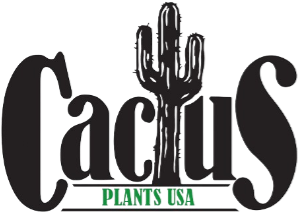
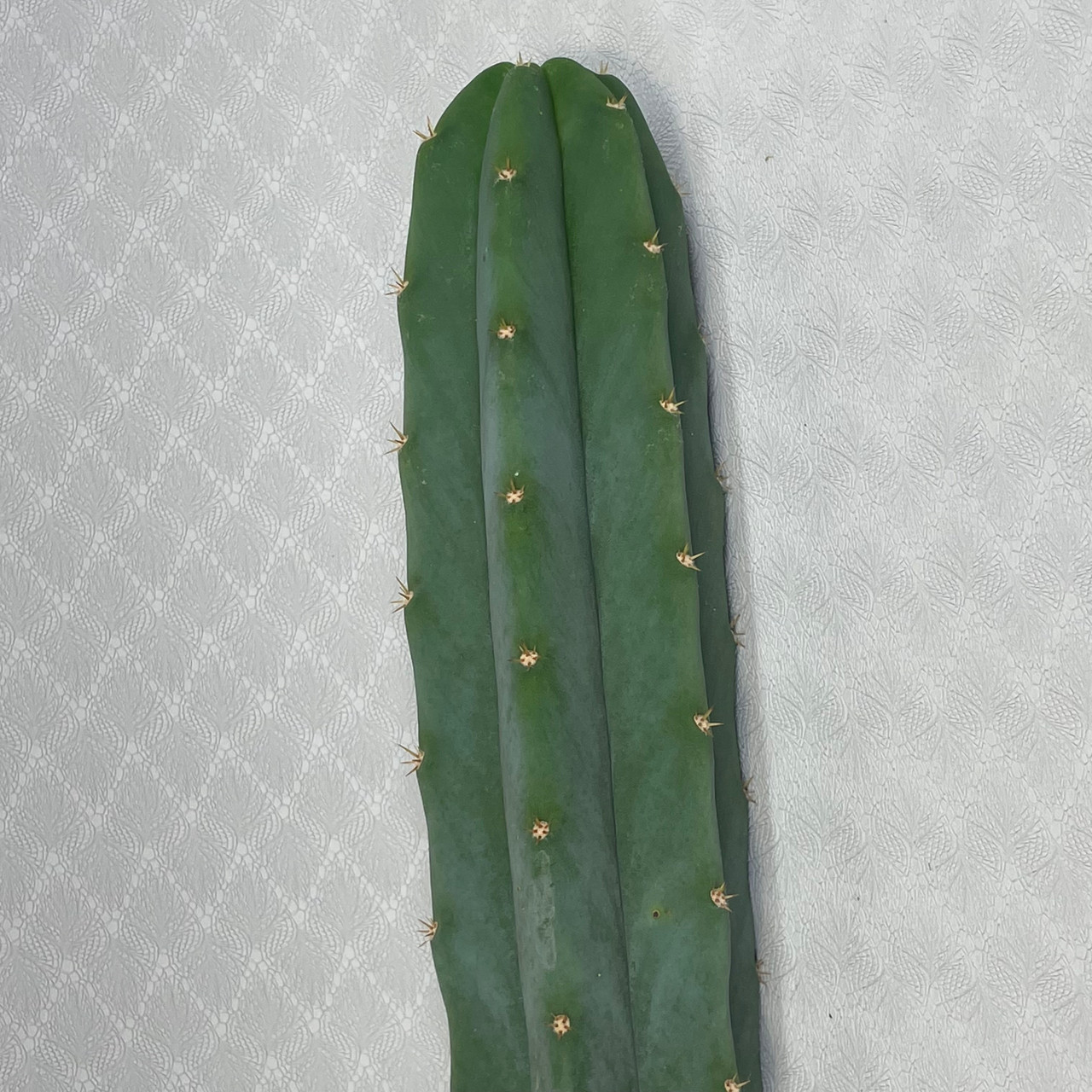

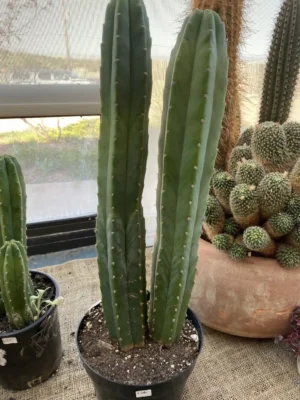
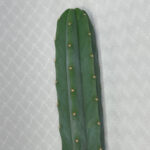
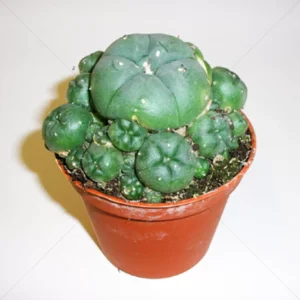
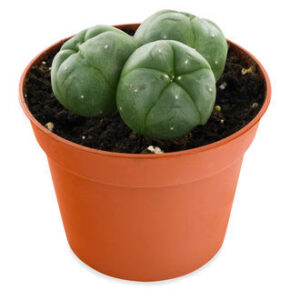


Reviews
There are no reviews yet.